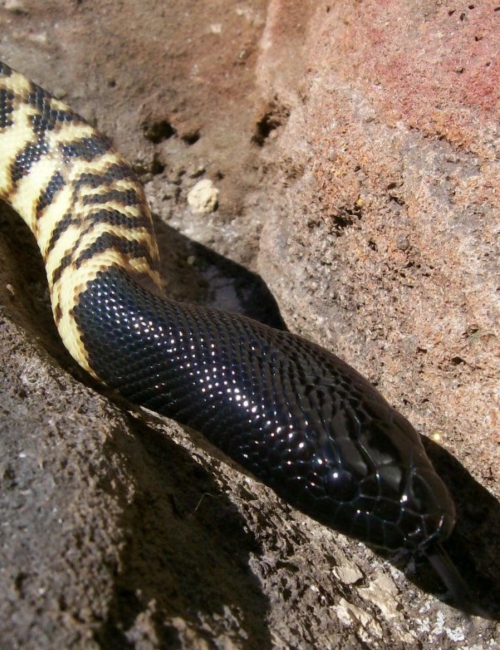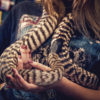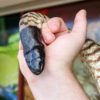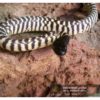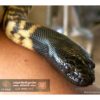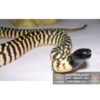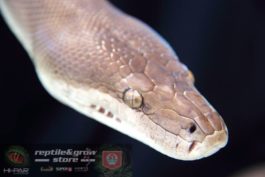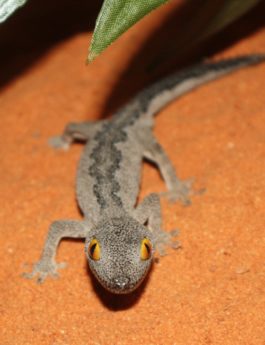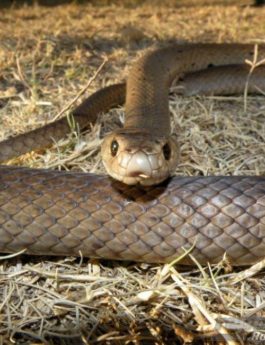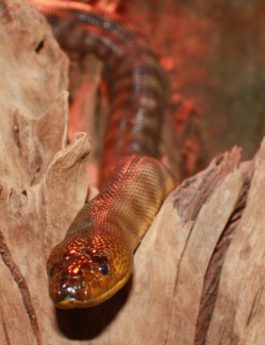Largest Aspidites. Ground colour cream, pale yellowish-brown to reddish-brown; palest bearing sharpest pattern in far west of range (west Kimberley region, W.A. south-westwards). Numerous dark brown to blackish bands (usually narrower than pale interspaces) extend between neck and tail-tip. These may be disjunct, or coalesced to form a dark suffusion along vertebral line. Head, neck and throat glossy black. Ventral surfaces cream to pale yellow, often bearing obscure blotches or smudges. These represent lower extremes of dark bands. TL 2.5m. Distinguished from A. ramsayi by head-colour (black vs pale).
Shelters in hollow logs, crevices, caves and abandoned burrows of monitors and mammals. Woodlands, rocky ranges and outcrops of subhumid northern Australia. Absent from extremely arid areas, and from cracking clay soils of western Qld. and adjacent N.T. Extends from North West Cape, W.A. through northern N.T. (as far south as Tea-Tree) to Qld. (south on coast to Gladstone district).
Terrarium: Black-Headed Pythons do not require an enclosure with very much height, however if given the correct environment with climbing enrichment they will explore their enclosure. The enclosure needs to be large enough to provide multiple hide rocks and maintain a thermal gradient, a terrarium that is 120x60x60cm (WxDxH) would be suitable to house a pair of mature Black-Headed Pythons.
Lighting & heating: UVB lighting is not essential to Black-Headed Pythons, however a low 2.0 spectrum fluorescent globe can be used for viewing purposes. Heating can be provided with a heat tile, mat or cord to maintain a ground surface temperature of 32°C in the hot spot. Ambient heat can be provided with an infrared heat globe to maintain a daytime temperature of 36°C in the warm end and 25°C in the cool end, on warmer days you may not need to turn on the heat globe as the ambient temperature of the enclosure may already be high enough. A thermometer should always be used to monitor the temperature within the enclosure.
Furnishings: It is important to provide your Black-Headed Python with plenty of hide caves throughout, a water bowl at the cool end, and artificial plants will give coverage and decoration. Large Logs and vines can be used within the enclosure to provide climbing enrichment. A pet bedding wood chips such as Chipsi or Critter Crumble can be used as a substrate.
Food in captivity: All captive bred snakes must be fed dead food. A Black-Headed Python will eat a variety of frozen and thawed mice, rats and chickens of appropriate sizes. On average they will have 1-2 food items every 7-10 days.
The essentials:
- Terrarium of appropriate size
- Tummy heating
- Thermometer
- Infrared Heat globe
- Water bowl
- Substrate
- Hide caves
- Foliage for shelter

